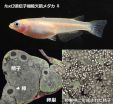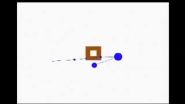(Press-News.org) This news release is available in German.
It has been hypothesized that globalization of human-mediated dispersal of species may break down biogeographic boundaries. However, empirical tests had been lacking until recently. An international research team has now discovered a comprehensive biogeographic reorganization for 175 species of alien gastropods across 56 countries. The data shows that homogenization is indeed happening. Geographic barriers to dispersal have fallen down but climate still limits how species colonize new areas. The study was published in the prestigious scientific journal Science.
When the first explorers sailed around the world they found that the further away they traveled, the more different were the species and ecosystems they found. This happens because there are geographical barriers to dispersal. One of the main barriers to dispersal is the ocean. Therefore, species in the same continent share a common evolutionary history, but species in continents that have not been connected in the past or in the present have followed different evolutionary paths and have diverged. Humans and goods travelling over the last few centuries have lead, intentionally or, most often, unintentionally, to the dispersal of species to new places. This human-mediated dispersal has been hypothesized to homogenize biodiversity and perhaps change the biogeographic regions, but this hypothesis had never been tested globally.
An international team of 5 researchers from Portugal, Austria and Germany tested the homogenization hypothesis by looking at 175 species of alien gastropods (snails) across 56 countries and subregions. For each location they compiled the list of alien species occurring there to obtain the global contemporary distribution of alien species - this is, the distribution of snails after human-mediated dispersal. The researchers then went to look at where these alien species were before the human-mediated dispersal. For each snail species they compiled the list of countries where they were native. The study comes in the wake of recent studies that could not find significant trends in biodiversity loss at the local scale over the last decades. "We therefore took a different angle. We didn't test whether there has been species richness changes in communities over time. Instead we asked how is the similarity between species communities changing", said Prof. Henrique Miguel Pereira from the German Centre for Integrative Biodiversity Research (iDiv) and Martin Luther University of Halle-Wittenberg, senior author of the study.
And the results were striking. "As expected, before human-mediated dispersal, similar communities were found within each major biogeographic region. But after human-mediated dispersal, the communities of aliens follow a completely new pattern and are organized into only two large biogeographic regions: tropics and temperate areas", César Capinha, lead author of the study, explained. It follows that communities of species in temperate areas are more similar to other communities in temperate areas, independently of the continent where they are, and the same happens for tropical communities. Before, human-mediated dispersal, no species were shared by communities separated by more than 11.000km, and very few species were shared between communities separated by more than 6.500km. Now, even locations as far away as 20.000km can share a large number of species.
In the past, geographical distance was the main factor determining the similarity. Now, climate is the major factor, with also a contribution of the distance and the amount of trade between countries, particularly the trade of goods that are vectors for the transport of snails, such as roof tiles, live plants, vegetables and fruits. This means that for similar climates, the stronger the trade of these products between two countries is, the more similar become the species communities in those countries.
The new study is the first global analysis of how invasions are reorganizing biogeographic patterns which have evolved over millions of years, and provides evidence that major biodiversity changes are underway. The study confirms that homogenization is happening, but filtered by climate. Geographic barriers to dispersal have fallen down but climate still limits how species colonize new areas. This suggests that in the future, communities will become increasingly similar to any other community with a similar climate anywhere in the globe. The authors warn that this expansion of alien species also places pressure on native species, as alien species have caused more species extinctions than any other pressure during the last 500 years.
INFORMATION:
Original publication:
César Capinha, Franz Essl, Hanno Seebens, Dietmar Moser, Henrique Miguel Pereira: The dispersal of alien species redefines biogeography in the Anthropocene, in: Science, 12 June 2015
For further information, please contact:
Henrique Miguel Pereira
German Centre for Integrative Biodiversity Research (iDiv)
Cell: +49 (0) 151 612 51644
hpereira@idiv.de
César Capinha
REFER Biodiversity Chair, Portugal
ccapinha@cibio.up.pt
Press Contact
Annette Mihatsch
Phone: +49 (0) 341 9733106
presse@idiv.de
Investigators from Massachusetts General Hospital (MGH) and the Ragon Institute of MGH, MIT and Harvard have added another piece to the puzzle of how a small group of individuals known as elite controllers are able to control HIV infection without drug treatment. In their paper published in the open-access journal PLOS Pathogens, the research team reports finding that dendritic cells of elite controllers are better able to detect the presence of HIV - paradoxically through a greater susceptibility to HIV infection - which enables them to stimulate the generation of T cells ...
The concept sounds like the stuff of science fiction: take a pill, and suddenly new tissues grow to replace damaged ones.
Researchers at Case Western Reserve and UT Southwestern Medical Center this week announced that they have taken significant steps toward turning this once-improbable idea into a vivid reality. In a study published in the June 12 edition of Science, they detail how a new drug repaired damage to the colon, liver and bone marrow in animal models -- even going so far as to save the lives of mice who otherwise would have died in a bone marrow transplantation ...
This news release is available in Japanese.
Researchers in Japan have found, for the first time in vertebrates, a genetic switch that determines whether germ cells become sperm or eggs. The gene is named foxl3, and has been identified using a small fish called medaka (Oryzias latipes). In medaka without this gene's functionality, surprisingly, sperm are produced in the ovaries of females. The sperm that are produced function normally, and have been confirmed to produce normal offspring. These results will be announced in the journal Science through Science Express ...
EDMONTON, Canada, June 11 -- In this summer's much anticipated blockbuster Jurassic World, actor Chris Pratt joins forces with a pack of swift and lethal velociraptors. 'Velociraptor belongs to a group of predatory dinosaurs called the deinonychosaurs, or simply the 'raptors',' says University of Alberta paleontologist Scott Persons. 'Raptors are characterized by particularly nasty feet. Their big toes each bore an enlarged and wickedly hooked talon, which makes raptors well suited for Hollywood fight scenes.'
Persons and University of Alberta alumnus Lida Xing are part ...
A NASA mission led by UCLA professor Christopher Russell has released new images of the dwarf planet Ceres, the largest asteroid between Mars and Jupiter.
The photos were produced by the spacecraft Dawn, which is now observing Ceres from 2,700 miles above its surface; NASA has also produced a one-minute video animation that sheds new light on this mysterious and heavily cratered world.
'Everything we learn from Ceres will be absolutely new,' said Christopher Russell, a UCLA professor of space physics and planetary science, and the Dawn mission's principal investigator. ...
Philadelphia, June 11 -- The Maillard reaction is a chemical reaction between amino acids and reducing sugars that results in browned foods like seared steaks and toasted bread. When proteins and sugars are mixed together and heated, new chemical compounds are formed. Some are responsible for new flavors and some, according to a new study published in the Journal of Dairy Science®, may protect us against cardiovascular disease.
Researchers at the R&D Center, Seoul Dairy Cooperative, the College of Life Science & Biotechnology, Korea University, and the BK21 Plus Graduate ...
People with autism are often described as "seeing the world differently." They tend to show superior perception for details, like, for example, the autistic artist Stephen Wiltshire's highly accurate representations of cityscapes drawn from memory. Now, researchers reporting in the Cell Press journal Current Biology on June 11 show that those differences in perceptual skill are present very early in infancy, before the onset of clinical symptoms of autism.
The researchers say that the findings may shift scientists' view of autism by suggesting that changes in perception ...
Sometimes it takes a long time to solve a puzzle: In 1893, German surgeon G. Reinbach discovered that tumor tissue is often infiltrated by special cells of the immune system called eosinophils. Ever since then, scientists have been trying to figure out if and how these cells, which are part of the innate immune system, are involved in cancer rejection.
"There are many studies that link the presence of eosinophils in a tumor with an improved prognosis of the disease. However, even 120 years after Reinbach's discovery, it still remained elusive whether or not eosinophils ...
ANN ARBOR--We've all been there: We eat an entire sleeve of fat-free, low-calorie cookies and we're stuffing ourselves with more food 15 minutes later.
One theory to explain this phenomenon is that artificial sweeteners don't contain the calories or energy that evolution has trained the brain to expect from sweet-tasting foods, so they don't fool the brain into satisfying hunger. However, until now, nobody understood how organisms distinguish between real sugar and artificial sweetener.
Now, a researcher at the University of Michigan has discovered how the brain of ...
Millimeter-wave (mmWave) wireless technology promises to support high-bandwidth content at speeds exceeding 10 gigabits per second--a thousand times today's current mobile phone download speeds--but with that promise comes public concern about the health risks associated with utilizing the high-frequency radio waves in that spectrum.
A multidisciplinary team of NYU researchers notes that unlike X-rays and gamma rays, which are called "ionizing radiation" and are known to cause genetic mutations due to their excessive energy levels, millimeter waves are "non-ionizing," ...

